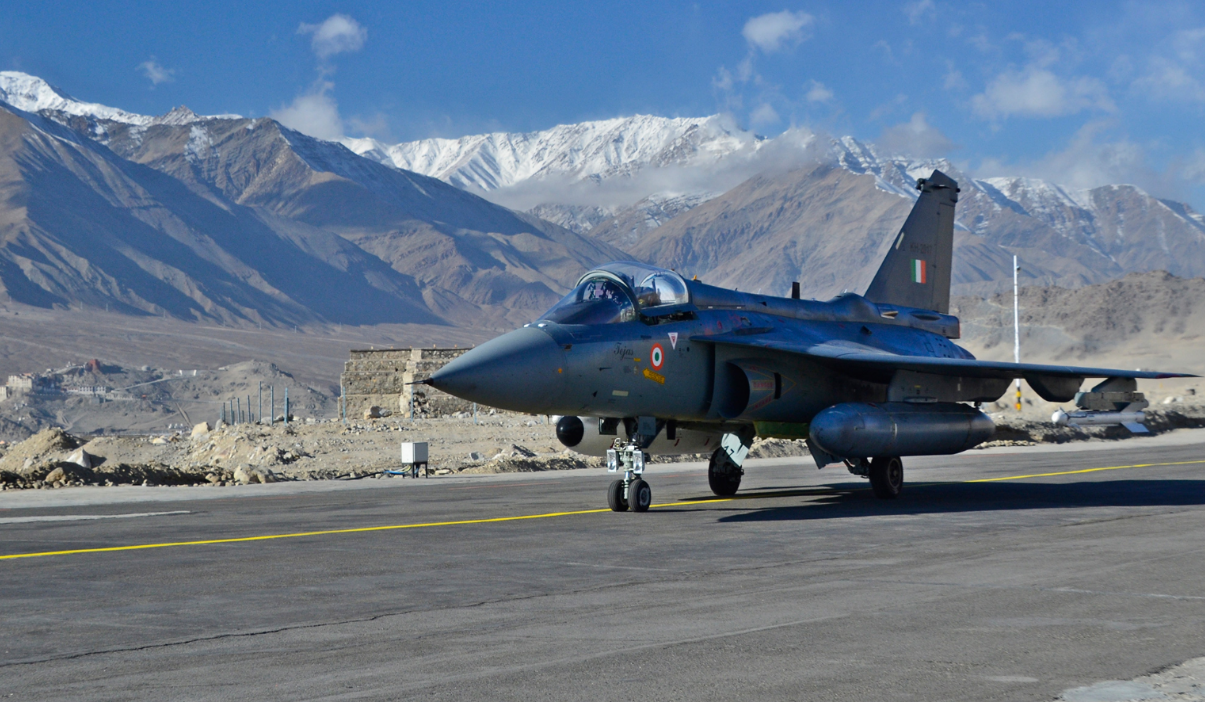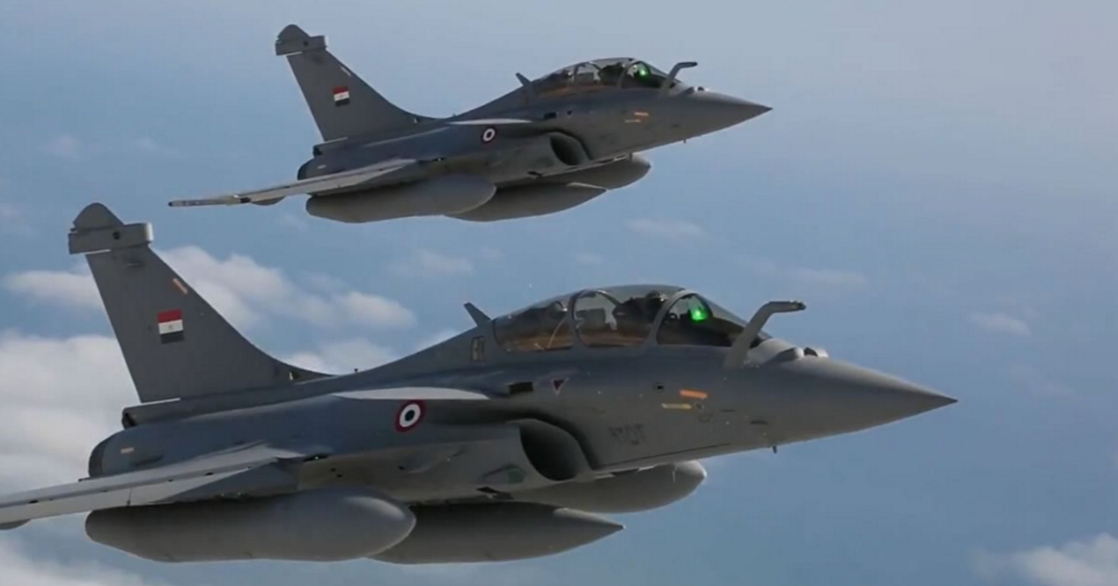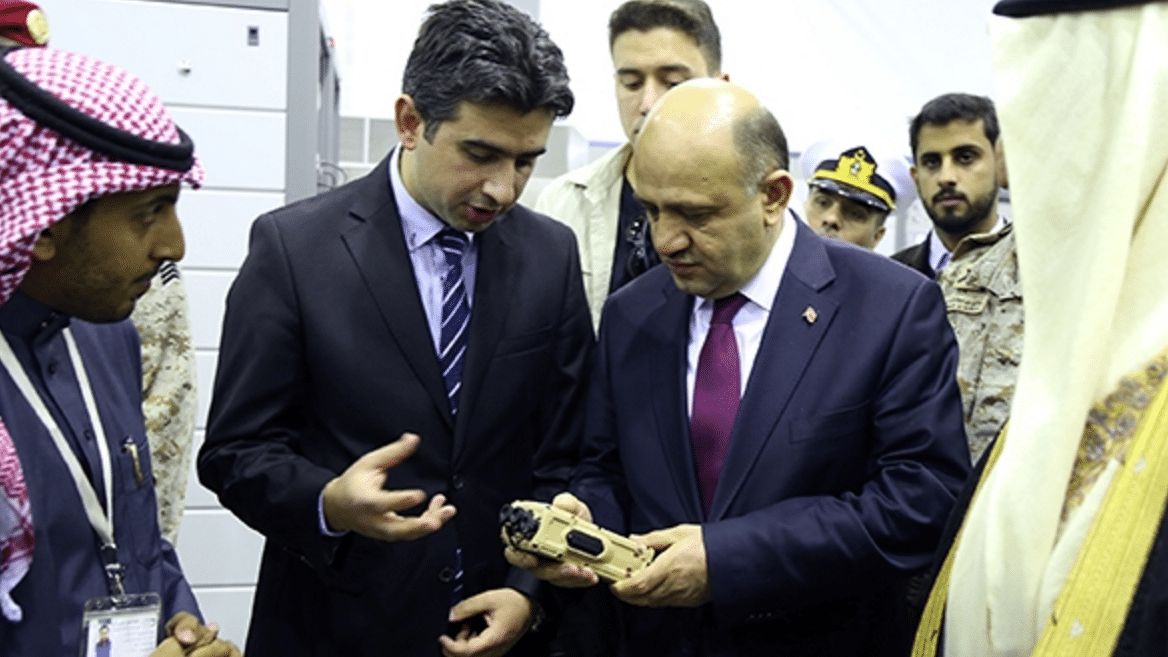2288Views 22Comments

Indian Navy not yet ready to push ahead with Naval Tejas
The Indian Navy has determined that the envisaged naval variant of the Hindustan Aeronautics Limited (HAL) Tejas is not yet adequate for carrier operations (Times of India).
India’s Chief of Naval Staff Admiral Sunil Lanba noted that the Naval Tejas’ thrust-to-weight ratio was not sufficient (when fully fueled and armed) for carrier take-off.
Admiral Lanba added that with the forthcoming addition of the INS Vikrant, India’s first locally designed and built aircraft carrier (40,000-tons), the Indian Navy will require another carrier-borne fighter to join its MiG-29K fleet in the “next five to six years.”
In early November, the Government of India issued a $7.5 billion U.S. order for 83 HAL Tejas fighters for the Indian Air Force (IAF), which, in turn, also began seeking a new medium-weight single-engine fighter.
India’s Gas Turbine Research Establishment (GRTE) will also be receiving support from Safran Group to complete the development of the Kaveri turbofan with the aim of having it power the Tejas by 2020.
Notes & Comments:
In May 2016, the Business Standard reported that HAL had been testing a Naval Tejas prototype using a ‘ski-jump’-like runway in Goa. In its clean configuration, the Tejas could take-off successfully. The director of the Aeronautical Development Agency (ADA) Commodore (retired) C.D. Balaji stated that the Tejas is, design wise at least, capable of ski-jump launches.
The Indian Navy’s concern with the Naval Tejas appears to stem from the Tejas’ inability to replicate that capability while fully armed and fuelled.
The INS Vikrant will use a short take-off but arrested recovery (STOBAR) launch system. The ski-jump runway necessitates a high thrust-to-weight ratio for successful take-offs. However, a STOBAR carrier is also simpler and more affordable to construct in comparison to an aircraft carrier using a catapult-assisted take-off but with arrested recovery (CATOBAR) system.
Although it is unlikely now that the Naval Tejas will be used from the INS Vikrant, the India Navy did not outright dismiss the program. Admiral Lanba said that the Indian Navy will “continue to support Defence Research and Development Organization (DRDO), HAL and ADA.”
The Naval Tejas, particularly the Mk. 2 variant (which could use a more powerful turbofan), could find its way to the INS Vishal, a larger Vikrant-class carrier with a CATOBAR launch system. A fully equipped Tejas should have less trouble operating from a CATOBAR carrier (with assisted take-off) than STOBAR.
However, the Vishal is not a short-term factor in that it falls beyond the Indian Navy’s five to six-year scope for a second carrier-borne fighter (for the Vikrant). In this respect, the Dassault Rafale, Boeing F/A-18E/F Super Hornet, and late-model Fulcrum could be India’s main options.
Dassault and Boeing have both built work-sharing partnerships with key Indian defence industry players (via offset clauses), which should position them as the leading competitors for the Indian Navy’s fighter requirements. For example, both sides can make the case that a fighter sale would be a matter of simply expanding upon existing partnerships, especially Dassault, which has been contracted to supply 36 Rafales to the IAF.



22 Comments
by GhalibKabir
This is what happens when Toilet paper of India journalists write without any knowledge. the moment the word overweight came, I realized this is toilet paper yellow journalism at its worst. Anybody even following the developments cursorily would have known all along the Naval LCA with the 404 engine was never going to be operationalized. It was the N LCA Mark 2 with the 414 engine and higher thrust that was supposed to do that. Given the current focus on the Mk-1A for the air force, it is natural Admiral Lamba would be supporting the Mk 2 NLCA to fly from the IAC 2 Vishal later.
The IN knows the Tejas with the 404 can prolly max carry 1.5 T ordinance and is no way overweight. Third grade sensationalism at its worst by this moron Rajat Pandit.
by GhalibKabir
If Parrikar does not get into this soon, most likely these chaps will make a complete dog’s dinner out of the whole issue. IOC only low capacity NLCA with the Mk1A config should be pushed on the Vikramaditya followed by either a 414 or Safran Kaveri uprated derivative Mk2 NLCA being parallely produced at the highest priority.
by Smoking a Tejas
Since we’re on the topic, any actual figures on what the fully loaded Tejas Mk-1A can take off with from a ski slope carrier top?
by GhalibKabir
An Mk1A from land is comfy with 3.5T, if the same 404 engine gets used on ski slope, the numbers I know are closer to 1.5T for STOBAR carrier. for closer to full ordinance load take off ideally the 98kN 414 or similar Safran Kaveri will be needed. That was the whole idea all along…. with service from the Vikramaditya in the early 2020s…
by HARSH Aditya
These people get paid by foreign arms dealers to continously downplay and defame indigenous efforts. Another names in the list are ajai shukla and bharat karnad. Backyard of both these gentlemen are on fire since 83 tejas were ordered or when rafale figures were reduced.
by Smoking a Tejas
Right, And are there figures on how much more the MK1 navy variant weighs vis-a-vis the land version taking into account airframe strengthening and landing gear?
by MT
With current ge404 IN20 tejas mk1a or any Mk1 version ll hv low thrust if fully loaded.
WE can’t take risk with aircraft carrier
So hopefully safran kaveri engine with 90+kn may be better than Ge414 which is to fitted in tejas mk2.
Safran plans to fix drdo
kaveri engine in 18months
by Sami Shahid
If LCA Tejas was a successful aircraft then India would not have been looking for Rafale, Gripen, F-18 , SU-30 and other.
by amar
@bilal khan
I spent so much time writing my comment yet it has not appeared here man!
by amar
my dear LCA is indeed successful however to take off from a carrier with extra weight in the form of strengthened under carriage and LEVCONs and offcourse full ordinance, it’ll require an engine with 90+kN of thrust. Even in it’s current form it can take off with something like 1.5-2t of ordinance which is piss poor compared to other options at the disposal of IN namely–mig-29K.
We must always bear it in mind that mig-29K is entirely different aircraft from air force mig-29. It has a fully digital FBW,RSS and is structurally bigger with higher thrust engine
by Bilal Khan
Which comment?
by amar
Bilal khan the comment wherein I explained the LEVCONs and LERX and also how exactly former is superior to latter at a penalty of complexity and weight
by Kashif
Can’t u put some light on India’s safran kaveri engine programme or refer me to some earlier your post, since m new here .. Regards
by Bilal Khan
It might have failed to load after you submitted it, it’s not on the system, not even in the deleted file.
by Bilal Khan
It got thrown into spam because of a certain word that starts with p and rhymes with miss. Keep it family friendly next time.
by GhalibKabir
There is technically no Mk1A Navy variant as the 404 was never meant to power the Naval LCA. As far as I know there has been decent headway apparently in reducing the weight of the landing gear and make adjustments to ensure reasonable payload for STOBAR ops. the Naval LCA always needed a close to 100 kN to account for stronger airframe, landing gear and weight contributed by both as a result. Close to 100 kN is either implies either Safran Kaveri or G 414.
So when people like Rajat Pandit or Prasun Sengupta write something that is not logical, the above points need to be remembered.
by amar
Man, there must be some misunderstanding or mistake.I don’t use any foul words or derogatory language. At least read the post before putting it in spam
by Bilal Khan
Disqus automatically puts posts with specific words, such as “p**s”, into spam. We don’t typically check to see what is in the spam section because we, naturally, assume that if someone is going to use certain words, they weren’t really up to good.
by amar
Oh sorry, I’ll keep that in mind next time! Thanks man!
by Guesstimater
Bilal I wish Pakistan was full of people like you.. Intelligent, inclusive, grounded and friendly. Others we have experienced are vindictive, exclusive, airy, rude and loud.
by Smoking a Tejas
Is the Kaveri operational with 100Kn?
by GhalibKabir
Not yet, the GE 414 refit on Tejas is underway I hear, that is a 98 kN engine and should help things along. If Trump does not hinder then GE 414 and GE 110 might get manufactured in India for the tejas and the F-16s that will be rolling off in a few years time.
Safran-Kaveri is a longer shot and I have my doubts if the French will share technologies like SCB that are critical for engines. After the DCNS leaks that made it clear how the French were screwing India over ToT, I am very skeptical